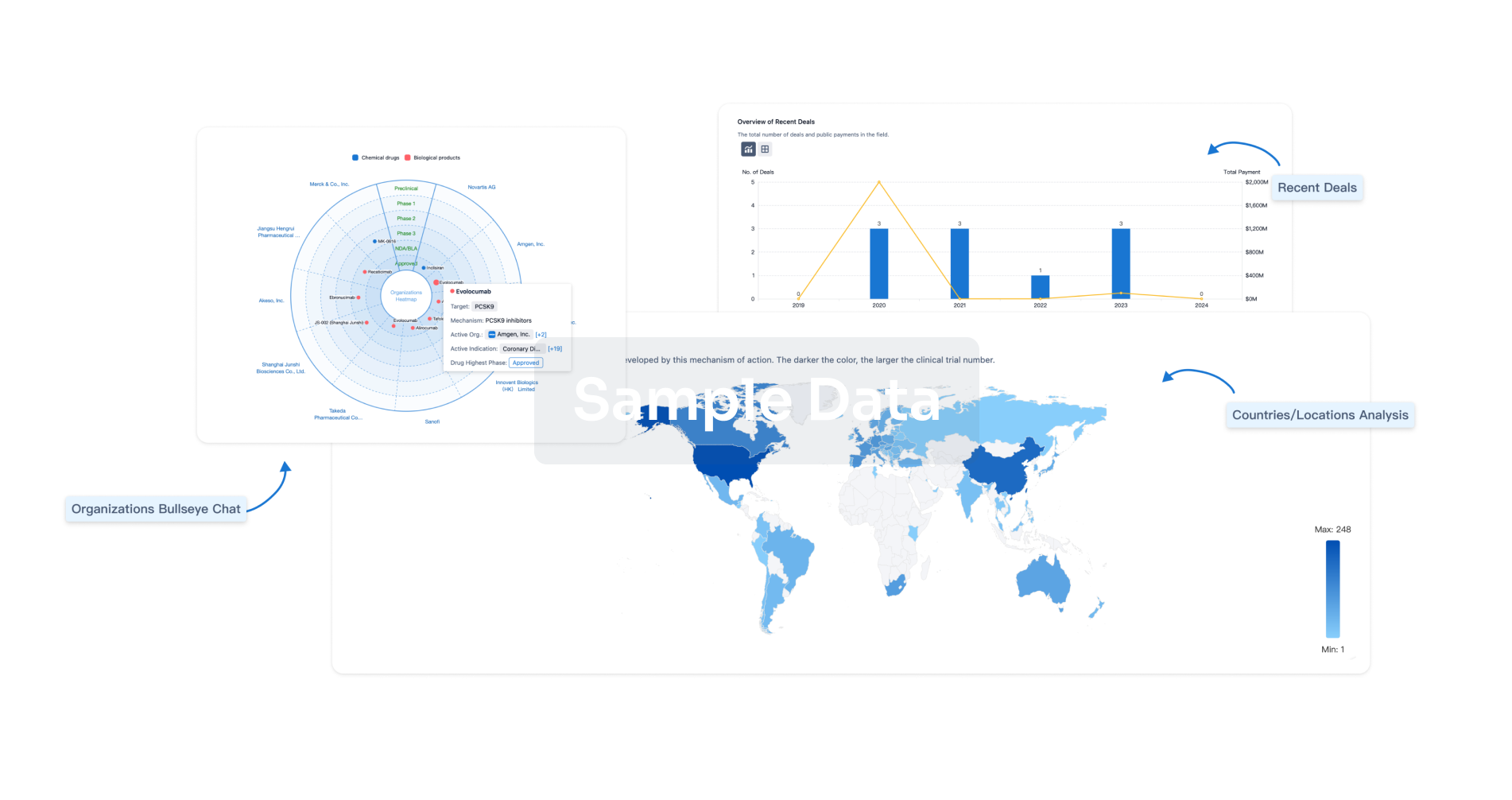Request Demo
Last update 08 May 2025
MARCHF1
Last update 08 May 2025
Basic Info
Synonyms E3 ubiquitin-protein ligase MARCHF1, FLJ20668, MARCH-I + [8] |
Introduction E3 ubiquitin-protein ligase that mediates ubiquitination of TFRC, CD86, FAS and MHC class II proteins, such as HLA-DR alpha and beta, and promotes their subsequent endocytosis and sorting to lysosomes via multivesicular bodies. By constitutively ubiquitinating MHC class II proteins in immature dendritic cells, down-regulates their cell surface localization thus sequestering them in the intracellular endosomal system. |
Analysis
Perform a panoramic analysis of this field.
login
or

AI Agents Built for Biopharma Breakthroughs
Accelerate discovery. Empower decisions. Transform outcomes.
Get started for free today!
Accelerate Strategic R&D decision making with Synapse, PatSnap’s AI-powered Connected Innovation Intelligence Platform Built for Life Sciences Professionals.
Start your data trial now!
Synapse data is also accessible to external entities via APIs or data packages. Empower better decisions with the latest in pharmaceutical intelligence.
Bio
Bio Sequences Search & Analysis
Sign up for free
Chemical
Chemical Structures Search & Analysis
Sign up for free